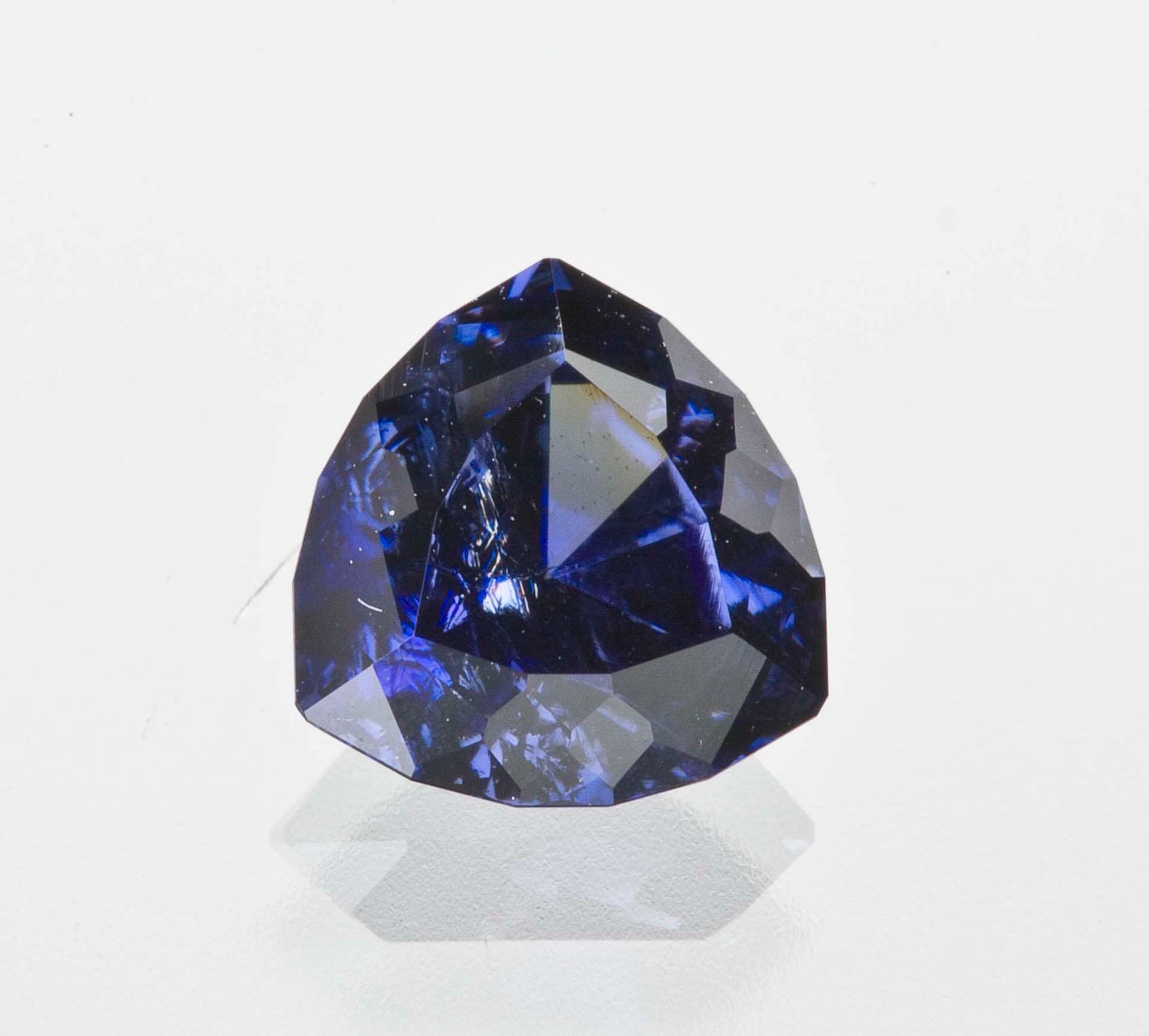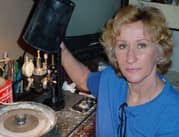Benitoite Value, Price, and Jewelry Information
With dispersion higher than diamond and sapphire blue body color, benitoite is one of the most attractive of all rare gems. Gem-quality crystals have been found only in San Benito County, California.
2 Minute Read
With dispersion higher than diamond and sapphire blue body color, benitoite is one of the most attractive of all rare gems. Gem-quality crystals have been found only in San Benito County, California.
Start an IGS Membership today
for full access to our price guide (updated monthly).Benitoite Value
This gem is quite expensive. Rich blue, clean stones at carat and above sizes can command high prices. Clarity enhances value, especially eye clean or better scores. Very light and very dark stones reside at the lower end of the value spectrum. At the pinnacle, you’ll find medium-dark stones.
Comments
Declared the state gem of California in 1985, benitoite was discovered in 1907. At first, opinions about the material's identity ranged from volcanic glass to spinel and, due particularly to its color, sapphire. However, the stone's greater dispersion and birefringence values distinguished it from sapphire. Further examination revealed it as a new gemstone.
Benitoite's sometimes intense blue color usually masks its high dispersion, which can potentially cause stones to twinkle with red and green flashes. Then again, the stone's scarcity also masks it from the general public, who remain largely unaware of this gem. Nevertheless, when the time comes to cut this rare stone, consumers face a choice between dispersion and body color. While some admirers will forgo the dispersive display for a darker blue stone, others will want a lighter stone with more evident dispersion. The gem pictured below shows a balance between rich body color and visible dispersion.
Because of the rarity of this material, even custom gem cutters sacrifice the cut to produce the largest possible gems. Thus, you'll commonly find windows and less than optimal proportions in faceted stones.
Flattened, triangular, typically small crystals show strong blue/colorless dichroism. However, to obtain the blue color, faceters usually orient the crystal along e. This yields good color but smaller gems.
Benitoite colors can range from various shades of blue to white and, more rarely, pinkish or colorless. Rough can show color zoning.
Synthetics
Laboratories have created synthetic colorless crystals too small to facet.
Enhancements
Heating can turn colorless benitoites orange. These stones will then show orange/pink dichroism. However, this treatment can also destroy gems due to inclusions exploding in the process. (See "Inclusions" in the Benitoite Information table above).
Sources
Only mines in San Benito County, California yield gem-quality material. However, this source unfortunately ceased production in 2005.
Other sources include:
- United States: Hot Springs County, Arkansas; Fresno County, Kern County, California.
- Australia; Czech Republic; Japan.
Stone Sizes
Crystals can reach a size of ~2 inches across. However, facetable areas are always very small because crystals are badly flawed. Most gems weigh under 1 carat but may reach 2-3 carats. Finished gems are almost always under 1 carat and usually less than 0.5 carat. Larger stones are exceedingly rare.
The Smithsonian Institution holds the largest stone on record, 7.8 cts. A 6.52-ct gem was cut for a private collector but stolen in transit.
The American Museum of Natural History in New York holds a 3.57-ct gem.
Care
With a hardness of 6.5, benitoites are tough enough for most jewelry applications. This collector's gem is very wearable. Due to inclusions, avoid using mechanical cleaning processes, such as ultrasonic or steam systems. Instead, use a soft brush, mild detergent, and warm water for cleaning. Consult our gemstone jewelry cleaning guide for more recommendations.
Joel E. Arem, Ph.D., FGA
Dr. Joel E. Arem has more than 60 years of experience in the world of gems and minerals. After obtaining his Ph.D. in Mineralogy from Harvard University, he has published numerous books that are still among the most widely used references and guidebooks on crystals, gems and minerals in the world.
Co-founder and President of numerous organizations, Dr. Arem has enjoyed a lifelong career in mineralogy and gemology. He has been a Smithsonian scientist and Curator, a consultant to many well-known companies and institutions, and a prolific author and speaker. Although his main activities have been as a gem cutter and dealer, his focus has always been education.
Barbara Smigel, PhD. GG
Barbara Smigel is a GIA certified gemologist, facetor, jewelry designer, gem dealer, gemology instructor and creator of the well-regarded educational websites acstones.com and bwsmigel.info.
Related Articles
Ultraviolet Testing and Gemstone Identification
Ten Gemstones Rarer than Diamond
Stichtite Value, Price, and Jewelry Information
Analcime Value, Price, and Jewelry Information
Never Stop Learning
When you join the IGS community, you get trusted diamond & gemstone information when you need it.
Get Gemology Insights
Get started with the International Gem Society’s free guide to gemstone identification. Join our weekly newsletter & get a free copy of the Gem ID Checklist!





